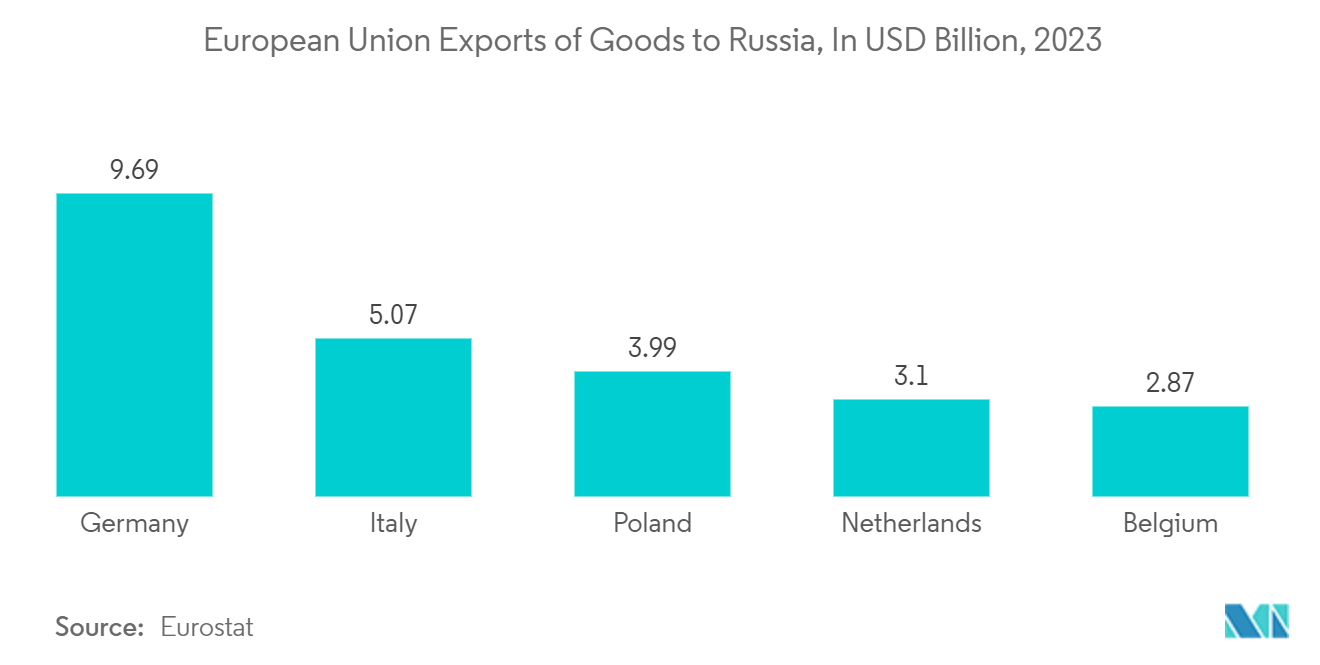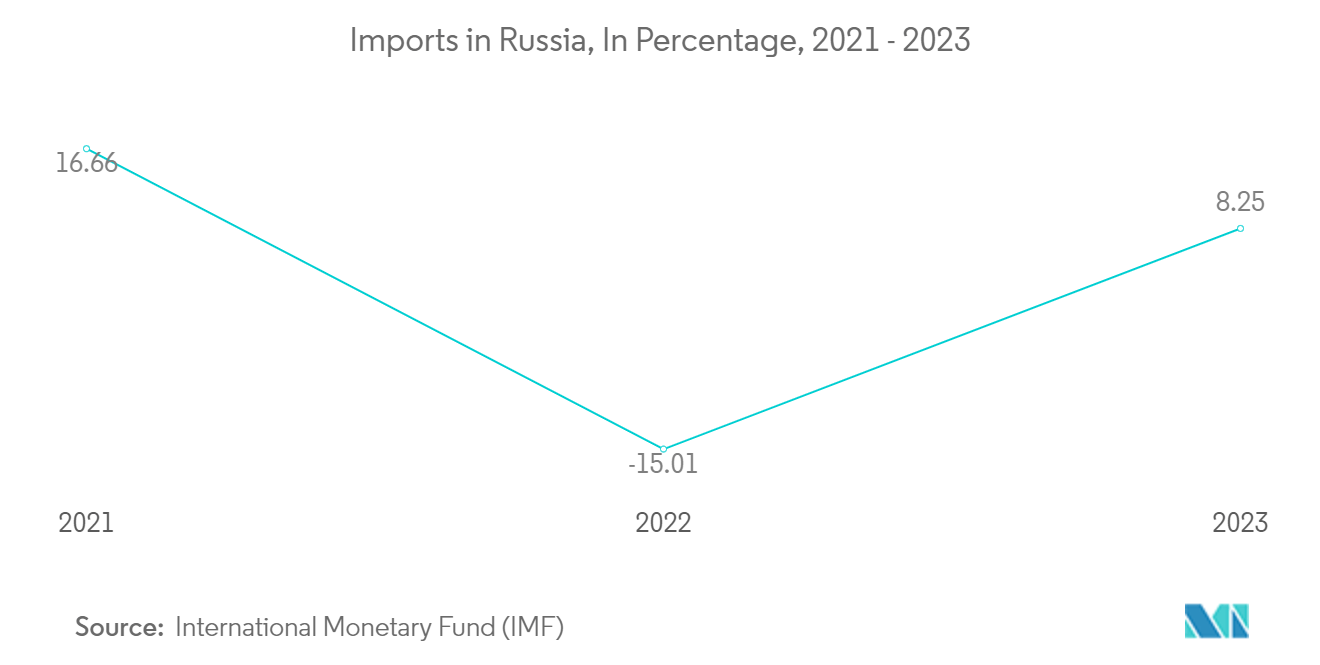Market Trends of Russia Plastic Caps And Closures Industry
Polyethylene (PE) Segment is Estimated to Have the Largest Market Share
- In Russia, the caps and closures industry predominantly utilizes PE as its primary raw material. Plastic caps and closures are favored for their cost-effective sealing solutions. The use of heat induction cap liners, compatible with a range of plastics like PP, HDPE, and LDPE, not only prevents leakage but also enhances tamper-evident features. This, in turn, is projected to drive market growth in the coming years.
- Polyethylene (PE) stands out as a highly durable plastic variant, prized for its chemical resistance and cost efficiency. Originating from petroleum polymers, PE has remarkable resilience against environmental challenges. This plastic is commonly segmented into two main categories: high-density polyethylene (HDPE) and low-density polyethylene (LDPE). HDPE, known for its rigidity, finds favor as a packaging material, especially for items demanding impact resistance. Consequently, driven by its robustness and economic appeal, numerous sectors in Russia are pivoting toward HDPE over LDPE.
- Pre-COVID, Russia's beverage sector rose rapidly within the nation's food and beverages landscape. Notably, the growing demand for non-alcoholic beverages in Russia surged. Consequently, the caps and closures market is poised for a notable uptick in demand. With a growing health consciousness among consumers, the thirst for healthier beverages is on the rise. This trend has notably bolstered the accessibility of bottled water, propelling growth in Russia's plastic caps and closures market.
- The rising imports of goods from the European Union in Russia propel the market demand for caps and closures. According to data by Eurostat, the top five imported countries in Russia were Germany, Italy, Poland, Netherlands, and Belgium in 2023, which is likely to drive market growth in the coming years.

Personal Care and Cosmetics Segment Expected to Dominate the Market
- Russia is experiencing a rising demand for beauty and personal care products, especially among its younger demographic, who are increasingly drawn to premium cosmetics and skincare. A heightened focus on beauty and the expanding availability of skincare, haircare, and beauty products underpins this trend. Notable favorites among consumers are lipsticks, perfumes, lotions, and nail polishes, often featuring plastic caps and closures.
- The influx of imported cosmetic and makeup products is a key driver of the industry's growth in Russia. Moreover, the surging popularity of customized caps and closures for cosmetics is further amplifying product demand. These components reflect a brand's aesthetic and serve as pivotal touchpoints for consumers, particularly in the realms of fragrances, beauty, and personal care.
- While renowned global players like Estee Lauder, L'Oreal, and Sephora have established a foothold in Russia, the recent conflict has led to operational constraints, with store closures and disrupted online sales. Despite these challenges, personal care and cosmetic product sales are anticipated to rebound in the coming years, bolstered by Russia's post-war economic recovery.
- The trade in Russia felt the reverberations of the Russia-Ukraine conflict, with Russia imposing bans on the import of specific goods. The International Monetary Fund (IMF) projects that imports of items, such as cosmetics and personal care products, are set to rise in Russia during the forecast period.


